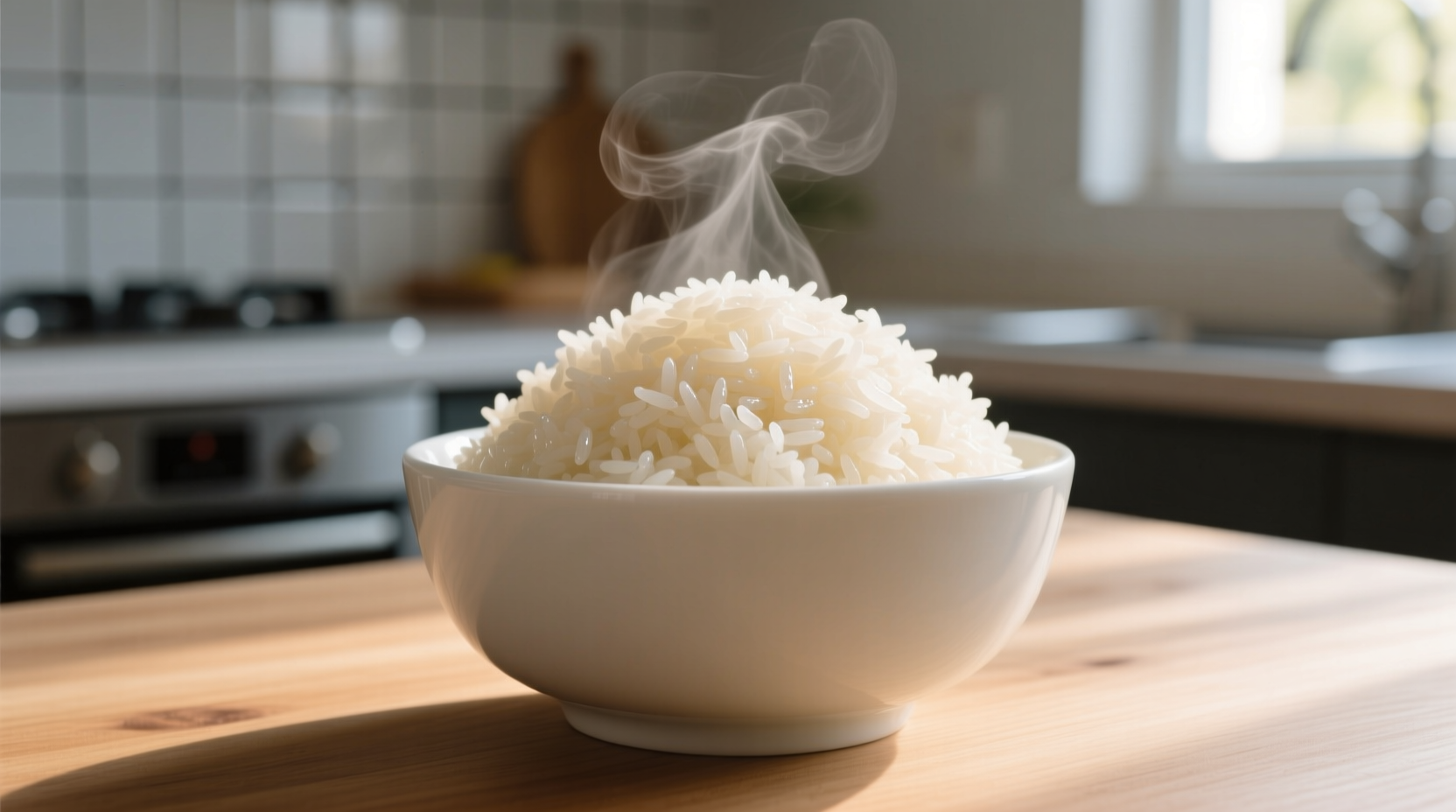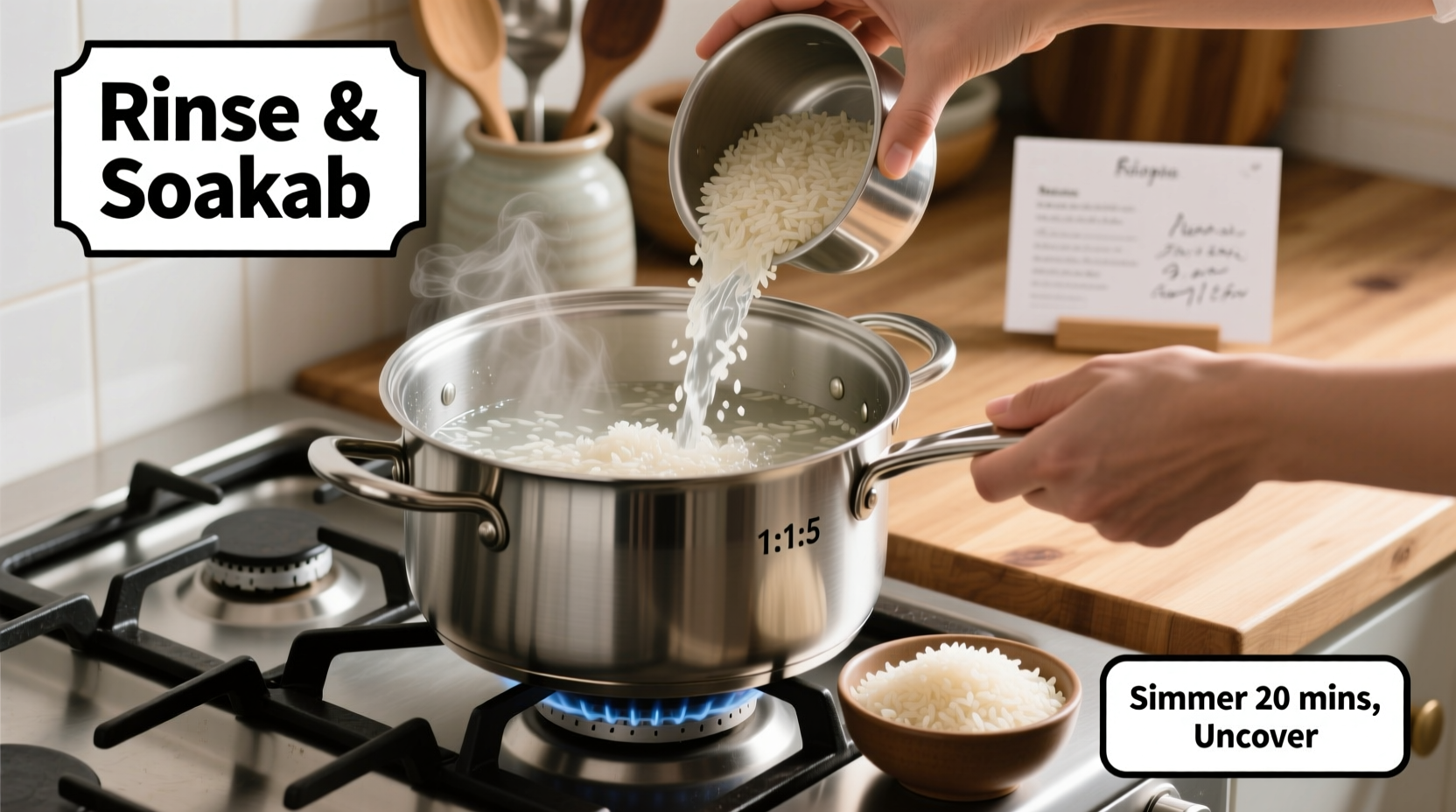Perfectly cooked parboiled rice requires a 2:1 water-to-rice ratio, 10 minutes of simmering followed by 10 minutes of resting off heat. Unlike regular white rice, parboiled rice shouldn't be rinsed before cooking and maintains its shape better due to the pre-gelatinization process during manufacturing.
Ever wondered why your parboiled rice turns out mushy or undercooked despite following regular rice instructions? You're not alone. Parboiled rice behaves differently than standard white rice due to its unique processing method. This guide delivers the precise technique professional chefs use to achieve fluffy, separate grains every time—no guesswork required.
What Makes Parboiled Rice Different
Parboiled rice (also called converted rice) undergoes a steam-pressure treatment while still in the husk before milling. This process drives nutrients from the bran into the endosperm and partially gelatinizes the starch. According to the International Rice Research Institute, this ancient technique originated in South Asia over 2,000 years ago to improve shelf life and nutritional value.
| Characteristic | Parboiled Rice | Regular White Rice |
|---|---|---|
| Water-to-rice ratio | 2:1 | 1.5:1 |
| Cooking time | 20-25 minutes | 15-20 minutes |
| Rinsing required | No | Yes |
| Texture when cooked | Firm, separate grains | Softer, potentially sticky |
Why Standard Rice Methods Fail with Parboiled
The pre-gelatinization during parboiling changes how the grains absorb water. When researchers at USDA Agricultural Research Service analyzed cooking properties, they found parboiled rice requires more water but less soaking time than regular white rice. The starch structure becomes more resistant to overcooking, which explains why your usual rice technique leaves parboiled grains either crunchy or mushy.
Essential Equipment Checklist
- Medium heavy-bottomed saucepan with tight-fitting lid
- Measuring cups (for precise water-to-rice ratio)
- Fork for fluffing (not a spoon, which crushes grains)
- Timer (critical for perfect results)
Step-by-Step Stovetop Method
- Dry toast (optional but recommended): Heat 1 cup parboiled rice in dry saucepan over medium heat for 2 minutes, stirring constantly until fragrant. This enhances nutty flavor.
- Add water and salt: Pour in 2 cups cold water and ½ teaspoon salt. Do not rinse rice first—this removes the protective starch layer crucial for proper texture.
- Bring to boil: Increase heat to high and bring to a rolling boil (uncovered), which takes about 8-10 minutes.
- Simmer: Immediately reduce heat to lowest setting, cover tightly, and cook for exactly 10 minutes.
- Rest off heat: Remove from burner (keep covered) and let stand 10 minutes. This critical steaming phase completes the cooking process.
- Fluff and serve: Gently separate grains with a fork. Avoid stirring, which releases excess starch and creates mush.

Alternative Cooking Methods
Rice Cooker Instructions
Use the same 2:1 water ratio but select the "white rice" setting rather than "quick cook." Most modern rice cookers automatically adjust for parboiled rice's longer cooking needs when using this setting. The "keep warm" function works perfectly for the essential resting phase.
Instant Pot Method
Combine 1 cup rice and 1.5 cups water (slightly less than stovetop due to sealed environment). Cook on high pressure for 6 minutes, followed by a natural 10-minute pressure release. The reduced water prevents sogginess in this sealed environment.
Troubleshooting Common Issues
- Hard center grains: Likely insufficient resting time. Always allow the full 10-minute steam rest off heat.
- Mushy texture: You probably stirred during cooking or used too much water. Stick to the 2:1 ratio and resist the urge to peek.
- Sticky clumps: Using a spoon instead of fork for fluffing compresses the grains. Always use a fork.
- Burnt bottom: Your burner heat was too high during simmering. Use the lowest possible setting.
Storage and Reheating Tips
Properly cooked parboiled rice keeps well in the refrigerator for 4-5 days. Store in an airtight container with a paper towel on top to absorb excess moisture. For best reheating results:
- Stovetop: Add 1 tablespoon water per cup of rice, cover, and heat on lowest setting for 5 minutes
- Microwave: Place rice in microwave-safe dish, cover with damp paper towel, heat 60-90 seconds
- Avoid: Reheating without moisture protection, which creates hard, dry grains
Frequently Asked Questions
Can I substitute parboiled rice for regular white rice in recipes?
Yes, but adjust cooking liquid and time. Use 25% more water and extend cooking time by 5-7 minutes. Parboiled rice holds its shape better in dishes like stir-fries and salads, but may require additional moisture in creamy dishes like risotto.
Why shouldn't I rinse parboiled rice before cooking?
Rinsing removes the protective starch layer formed during parboiling. This starch is essential for the proper gelatinization process during cooking. The USDA notes that parboiled rice has already been cleaned during processing, so rinsing only wastes nutrients and compromises texture.
How does parboiled rice affect cooking time for one-pot meals?
When using parboiled rice in one-pot dishes, add it later in the cooking process than regular rice. For soups and stews, add parboiled rice during the last 20 minutes of cooking. This prevents overcooking while allowing proper absorption of flavors.
Is parboiled rice healthier than regular white rice?
According to the International Rice Research Institute, parboiling drives nutrients from the bran into the grain, resulting in higher levels of B vitamins, potassium, and fiber compared to regular white rice. While not as nutritious as brown rice, parboiled offers a middle ground between nutrition and cooking convenience.











 浙公网安备
33010002000092号
浙公网安备
33010002000092号 浙B2-20120091-4
浙B2-20120091-4